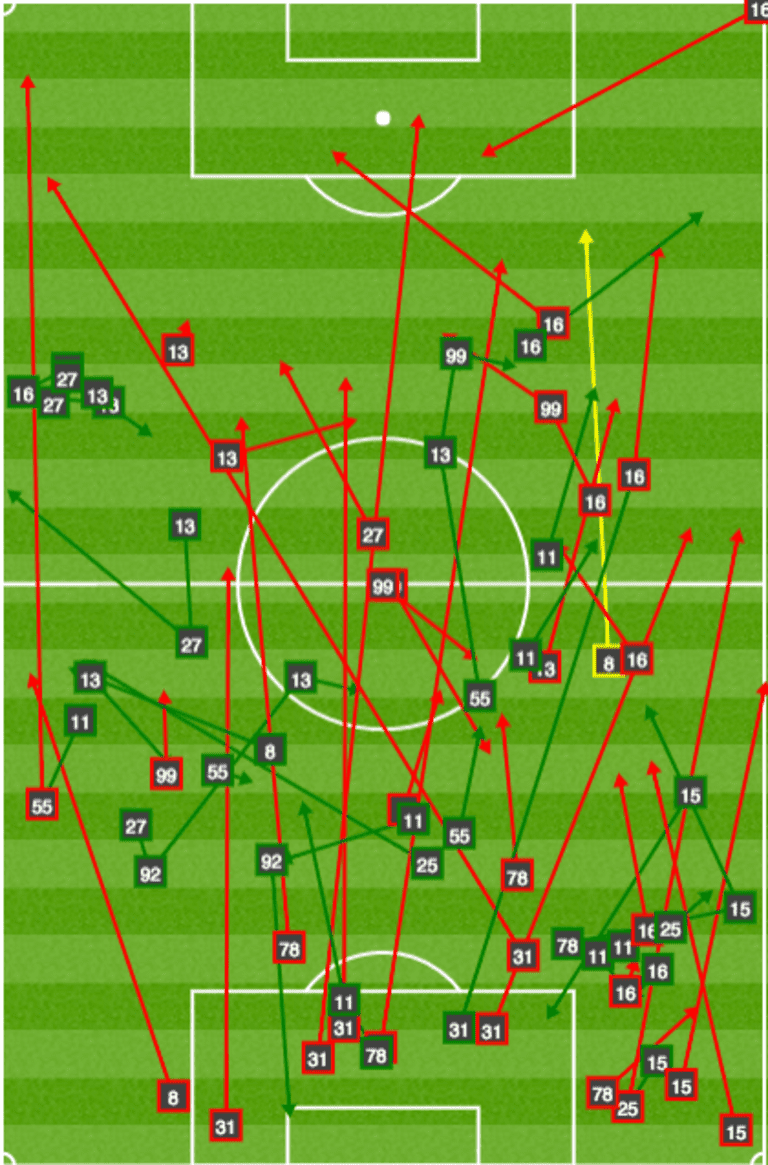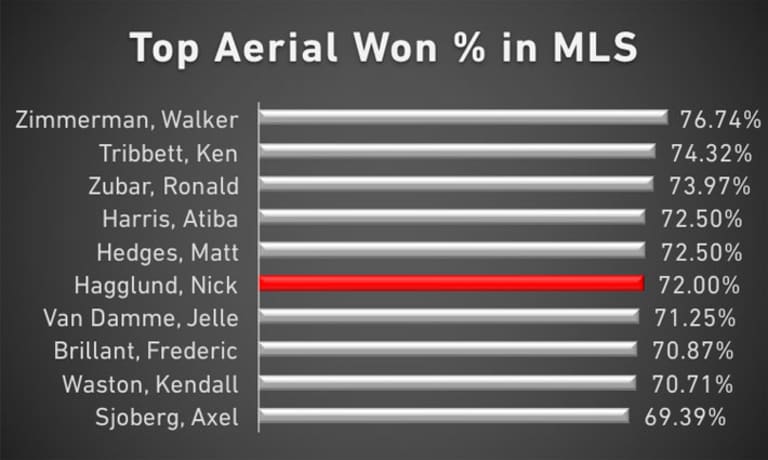On September 18, Toronto FC fell behind 3-1 to the New York Red Bulls following a Bradley Wright-Phillips goal in the 48th minute.
After 15 more minutes that saw Toronto take four unsuccessful attempts on goal, head coach Greg Vanney decided to make a tactical switch. Out went the 4-4-2 diamond formation in which the team started the game, and in came two subs – Daniel Lovitz and Tsubasa Endoh – as the team switched to 3-5-2 with the new arrivals playing as wingbacks.
This was not something foreign to the Reds, as they had started six games this season in the 3-5-2. They were unbeaten in those six with a record of 2-0-4, and Vanney has been prone to try different ways to arrange his players throughout the course of the season.
“It was part of our strategy through the course of the year for our guys to be able to adapt to different scenarios in different ways. Whether we have to push a game, whether we want to lock down a game, whether we think we can create different reference points for the opposition while we maintain our comfort level with it,” said Vanney in an interview with ExtraTime Radio on October 13.
They certainly looked comfortable for the rest of the game against the Red Bulls. They tied the game up behind two goals from Jozy Altidore in the 68th and 86th minutes, and in the process pinned Jesse Marsch’s deep into their own defensive third. You can see just how far RBNY were pushed back by looking at their team passing map over the last 25 minutes.

The green arrows are complete passes; red ones are incomplete. The yellow arrow is a chance created. New York were simply unable to get onto the front foot.
To be fair, this wasn't down solely to one switch from Vanney – Marsch made his own in the 69th minute, subbing Sal Zizzo on for Alex Muyl and shifting to a back five from a back four.
What was clear after the game is that Toronto knew what they were doing when Vanney made the switch.
As Matt Doyle pointed out yesterday, teams aren't used to attacking a 3-5-2. The gaps that a 3-5-2 leaves open are vastly different from the ones that a 4-4-2 formation does. This has helped Toronto concede just eight goals in the nine games they have started a 3-5-2.
After taking that into consideration, it’s easy to see why Toronto have adopted the formation to some extent. While neither Altidore nor Sebastian Giovinco are true playmakers, the players behind them allow them to freelance up top. With that freedom, two of the best strikers in MLS can do what they do best: create goals.
With no true starting-caliber wingers on the roster, Toronto’s shift to the 3-5-2 has allowed two of the best fullbacks in MLS, Justin Morrow and Steven Beitashour, to have freer roles on the flanks.
With those two getting up and down the wing and the two forwards creating attacking opportunities, the three midfielders have one main task, which is to dominate the center of the park. They largely did so against the Red Bulls, and in the few times they've used the formation since.
After the game against RBNY, the 3-5-2 formation did not appear again for Toronto until Decision Day. They beat the Chicago Fire 3-2 and have utilized the formation in their two Audi 2016 MLS CupPlayoff wins.
In those games, Toronto’s system has stifled opponents' advances as it did against the Red Bulls. Toronto are not known as the team that presses the most but in this formation, their system allows them to selectively press their opponents a bit higher. And it shows.
Opponents have completed 73.56 percent of their passes over the past three games, a drop-off of 3.5 percent from when Toronto have utilized four-man backlines this season. The numbers are more stark when looking at opponents passing in their own half.
Formation |
Opponents Passing Accuracy |
Opponents Passing Accuracy in own half |
|---|---|---|
4 defenders |
77.17% |
87.24% |
3-5-2 last 3 games |
73.56% |
82.34% |
It’s important to keep in mind that all three of these games were played at BMO Field. That won't be the case on Sunday at Yankee Stadium.
Regardless, with three center backs Toronto aren't just pressing, but are also snuffing out crosses. While Drew Moor is a solid presence in the air, Eriq Zavaleta has somewhat struggled, winning just 56 percent of his aerial duels. The insertion of Nick Hagglund into the starting XI gives Toronto a player who is one of the strongest in the air in MLS.

With the back and the flanks squared away, the three midfielders (Michael Bradley, Armando Cooper, Jonathan Osorio) have done their job, none more so than Bradley. The US national team captain is not relied upon to defend in space as much, instead coming in as a second defender to halt an attack and regain the ball.
Here’s Vanney talking about his performance against NYCFC on Sunday night.
“I thought what was really special about his performance tonight was how quickly he was getting to close the double team. They’ve got guys, not just David Villa, but they’ve got [Steven] Mendoza and [Jack] Harrison who are very good dribblers. When they get guys in one-and-one situations [they] can be very dangerous and Michael was there in a flash to be the second defender to help support our back three.”
“In terms of defensively, he was picking up loose balls, he was doing a lot of the dirty [work] that doesn’t catch the spotlight. But I thought he did an incredible job of covering ground and being in places to help snuff things out and to really help drive our pressure from the backside.”
It will be interesting to see if Vanney turns to the 3-5-2 again on Sunday (6:30 pm ET; FS1 in US | TSN4,5 in Canada), with Toronto playing on the narrow Yankee Stadium field.
We do know that a formation shouldn’t be the defining trait of a team. Rather, a defined system with principles that are understood by the whole team – and can then be translated across formations – should be, and Vanney would tell you that himself.
Regardless, it’s clear that the 3-5-2 is a look TFC's opponents have struggled with. And if they keep it going, it could pave the way for a deep run in these playoffs.











